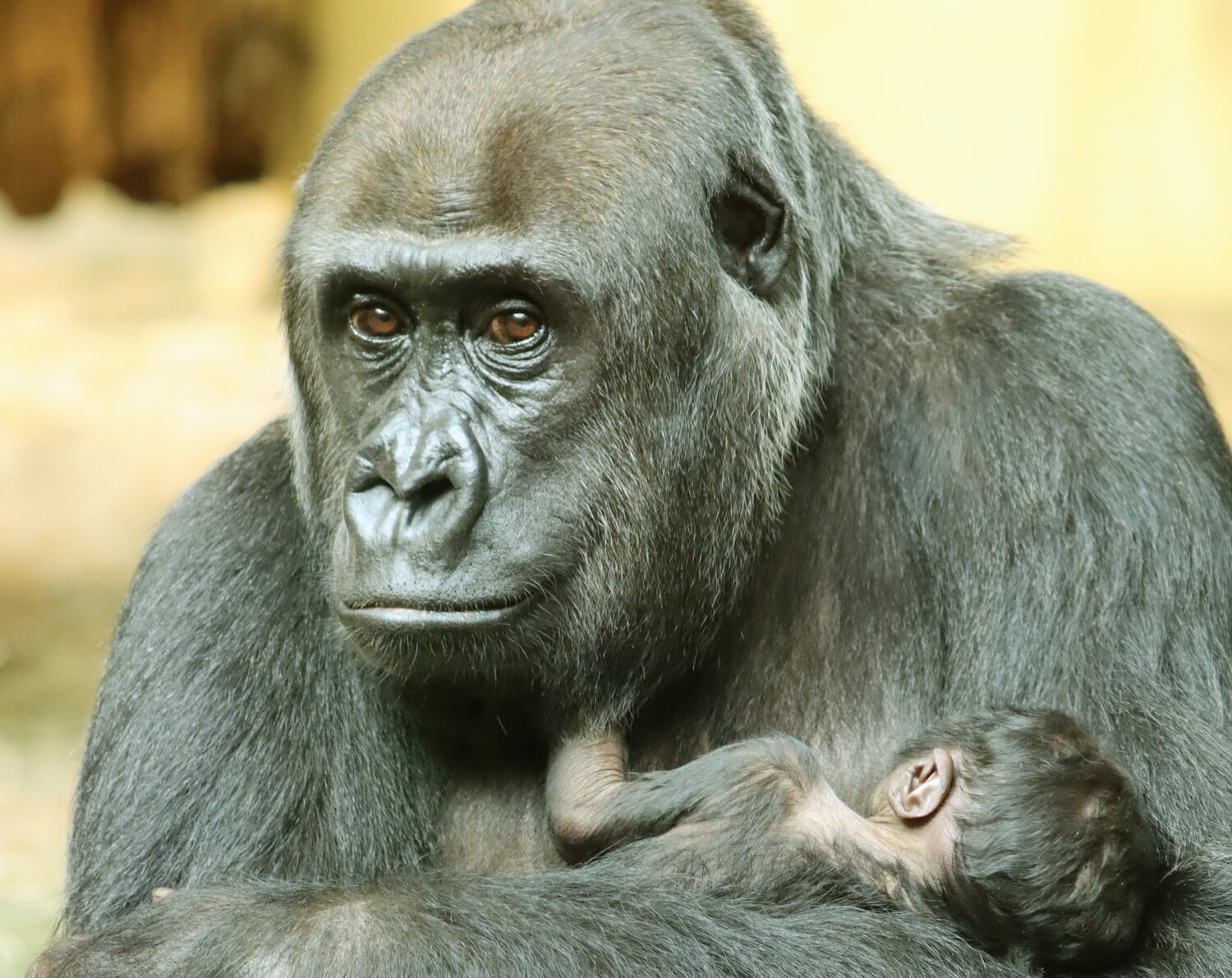In the night of 3 to 4 March, a little gorilla came into the world at Zoo Berlin – right on cue for World Wildlife Day. This day serves to raise awareness of the need to protect endangered animal and plant species, and of global efforts to preserve biodiversity. So what could be a more fitting way to mark this special day than by welcoming a new member of an endangered species?
“We are delighted by this good news,” says Zoo and Tierpark Director Dr Andreas Knieriem. “We wish we could have had a nice new home ready for the baby, but the recommendation from the European Endangered Species Programme to commence breeding efforts with Djambala came before that could be built.” However, a new habitat for the Zoo’s gorilla family is in the pipeline. “We are examining the possibilities of creating a large complex on the extension area that blends harmoniously into the natural surroundings,” explains Knieriem. “This roughly two-hectare area offers a good location for spacious indoor and outdoor facilities that will meet the highest animal-keeping standards now and into the future.” For the past three years, Zoo Berlin has been collecting donations for the new habitat under the campaign slogan “My gorilla gets a villa at the Zoo”. Anyone who wants to help can make a contribution here: Sponsorships at Zoo Berlin – Zoo Berlin (zoo-berlin.de)
For now though, the Zoo Berlin team simply has to wait and hope for the best. “Mother Djambala and her offspring are doing well,” reports Zoo veterinarian Dr André Schüle. “For the past three years, Djambala has been watching fellow female Bibi and thus getting lessons in how to eventually rear her own offspring. This leaves us hopeful that she will do a great job as a first-time mum. All we can do is keep our fingers crossed.” Right now, peace and quiet are the top priority. The young ape is fully dependent on the care of its mother for the first few months and won’t be weaned until four to five years of age. Baby gorillas can cling to their mother’s fur from the moment they are born, and their mums carry them around everywhere – at first hanging from their tummies, and later on their backs. During the critical initial period, the gorilla area of the Primate House will only be accessible to keepers, who will observe the new family situation from a distance. As a result, neither the weight nor the sex of the young ape can currently be determined, and the rear part of the Primate House is not accessible to visitors.
This is the first offspring born to Djambala (24). In addition to father Sango (21), Zoo Berlin’s gorilla family includes females Bibi (27), Tilla (3) and Mpenzi (38). Elderly Fatou (66), the oldest known gorilla in the world, is spending her retirement in a separate, neighbouring habitat.
Background
Western lowland gorillas are classified as “Critically Endangered” on the IUCN Red List of Threatened Species. Gorillas are the largest and heaviest apes in the world. Adult males can weigh around 220 kilos and reach up to two metres in height. Gorillas live in family groups led by dominant males known as “silverbacks” for the silver-grey hair they develop on their back and rump. Western lowland gorilla Bobby was the first gorilla to move into Zoo Berlin back in 1928, and he has been eternalised in the Zoo Berlin logo ever since.
According to estimates, there are currently only around 300,000 western lowland gorillas living in Africa – and that number is falling rapidly. More than half of these apes live in the Republic of the Congo. The reasons for the continuing population decline are habitat loss through deforestation and agriculture, hunting for bushmeat, and the transmission of disease through contact with humans.
